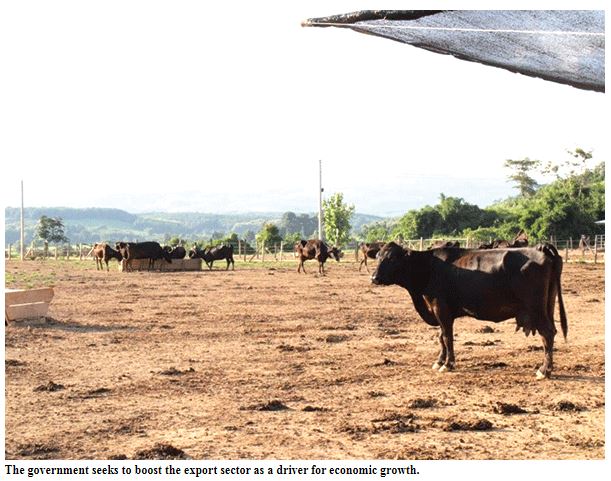Slower growth projected for Lao economy: World Bank
Economic growth in Laos is expected to be slower than forecast in April due to both external and internal factors, according to a report issued by the World Bank on Monday.
The World Bank’s East Asia and Pacific October 2022 Economic Update lowered the gross domestic product (GDP) growth forecast for Laos in 2022 to 2.5 percent from the earlier 3.8 percent projection and 3.8 percent for 2023.
According to the World Bank, economic performance across developing East Asia and the Pacific, including Laos, could be compromised by slowing global demand, rising debt, and a reliance on short-term economic fixes to cushion against food and fuel price increases.
“Beyond the end of 2022, three factors could be a drag on growth: global deceleration, rising debt, and policy distortions,” the report stated.
“Current measures to contain inflation and debt are adding to existing distortions in the markets for food, fuel and finance in ways that could hurt growth. In each case, more efficient measures could address current difficulties without undermining longer-term objectives.”
Growth in developing East Asia and the Pacific outside of China is forecast to accelerate to 5.3 percent in 2022 from 2.6 percent in 2021.
China, which previously led recovery in the region, is projected to grow by 2.8 percent in 2022, a sharp deceleration from 8.1 percent in 2021.
For the region as a whole, growth is projected to slow to 3.2 percent this year from 7.2 percent in 2021, before accelerating to 4.6 percent next year, the report states.
The report also noted that Laos, Mongolia and Myanmar have faced more significant exchange rate and inflation pressures than the rest of the region.
Laos and Mongolia are most vulnerable in these respects, because they were already struggling with high debt. Growing debt service is straining the finances of governments and firms and hence limiting public and private investment, according to the World Bank.
In Laos, the weakening exchange rate is contributing to inflation, ramping up pressure on low-income families and hindering their chances to rise above poverty.
The global economic slowdown is beginning to dampen demand for exports of commodities and manufactured goods in the region.
“Rising inflation abroad has provoked interest rate increases, which in turn have caused capital outflows and currency depreciations in some East Asia and Pacific countries. These developments have increased the burden of servicing debt and shrunk fiscal space, hurting countries that entered the pandemic with a high debt burden,” the report stated.
As countries in the region seek to shield households and firms from higher food and energy prices, current policy measures provide much-needed relief, but add to existing policy distortions.
Controls on food prices and energy subsidies benefit the wealthy and draw government spending away from infrastructure, health and education, according to the World Bank.
Source: https://www.vientianetimes.org.la/freeContent/FreeConten188_slower.php


 English
English




